15 Richest Counties in Michigan (2023): Michigan’s Money Magnets
Michigan, often celebrated for its industrial might and iconic Motown legacy, is a state of striking diversity. Beyond the gleaming automotive plants and bustling metropolises, this state boasts a hidden tapestry of prosperity. We invite you to embark on a journey through the 15 Richest Counties in Michigan, where the American dream is not just a distant aspiration but a living reality. These counties, ranked from 15 to 1 by median household income, showcase not only economic affluence but also a deep history of growth, adaptation, and resilience. From the tranquil shores of Lake Michigan to the bustling hubs of innovation, we explore how these counties have evolved from their inception to the present, forging their own unique identities.
Descending Order of Wealth
As we venture into these counties, we start our exploration in Kent County, with a median household income of $49,532. Stepping back in time, we uncover the historical roots of this region, tracing its transformation from a lumber and furniture epicenter to a vibrant hub of healthcare and education. Each county reveals its own captivating narrative, from Allegan’s agricultural heritage to Grand Traverse’s journey from logging to tech. With each step, we traverse the corridors of history and development, highlighting the economic milestones that have defined these counties and continue to shape their destinies.
15. Kent County
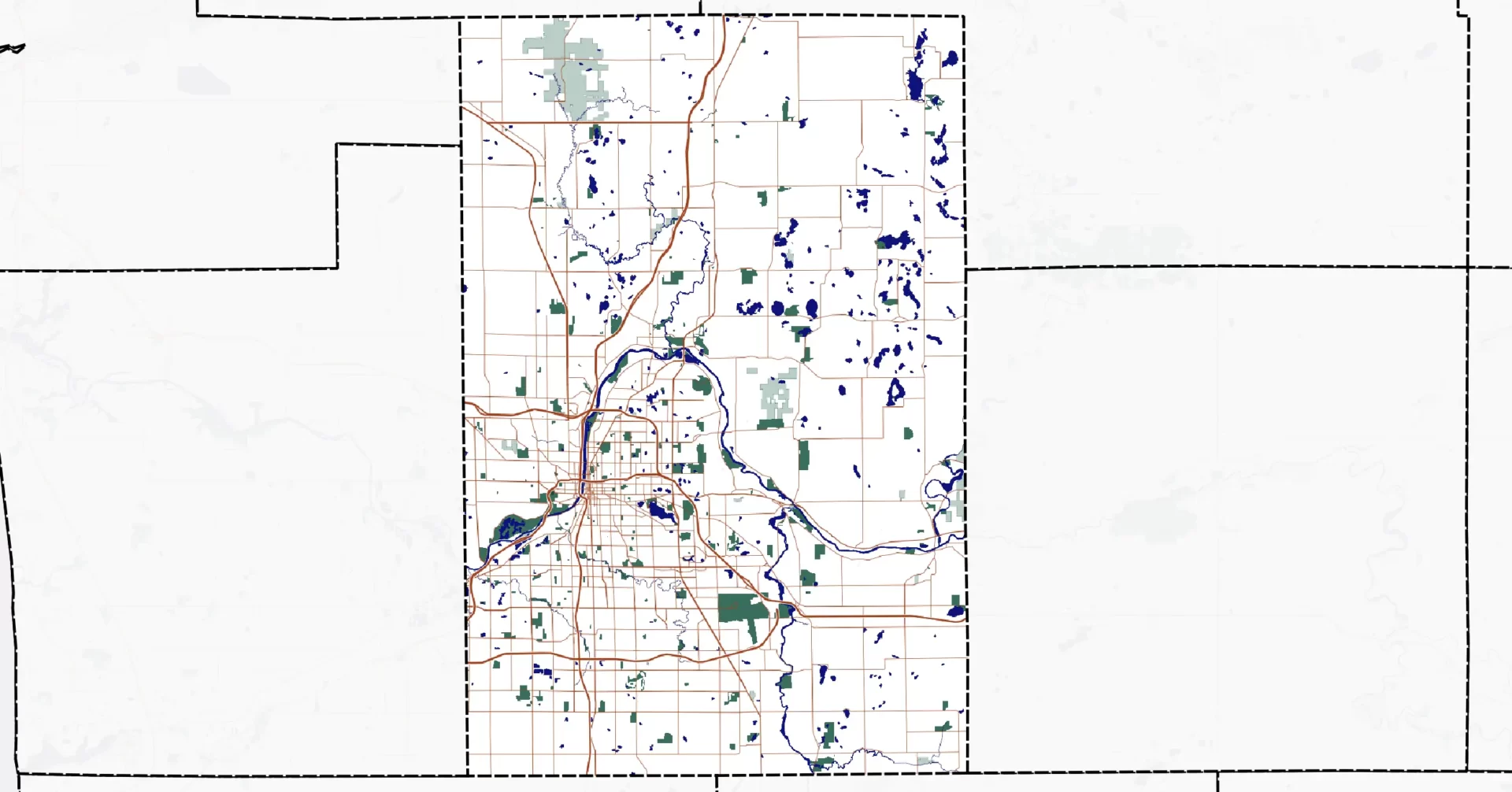
Median Household Income: $49,532
History and Economic Development: Kent County, founded in 1836, has a rich history intertwined with the growth of Grand Rapids, its largest city. Initially shaped by the lumber and furniture industries, the county saw substantial economic development in the late 19th century. The Grand Rapids Furniture Strike of 1911 played a pivotal role in labor rights, ultimately contributing to the county’s economic stability. Today, Kent County thrives as a hub for healthcare, education, and manufacturing. With institutions like Spectrum Health and Grand Valley State University, the county continues to grow, attracting a diverse workforce and nurturing innovation.
14. Allegan County
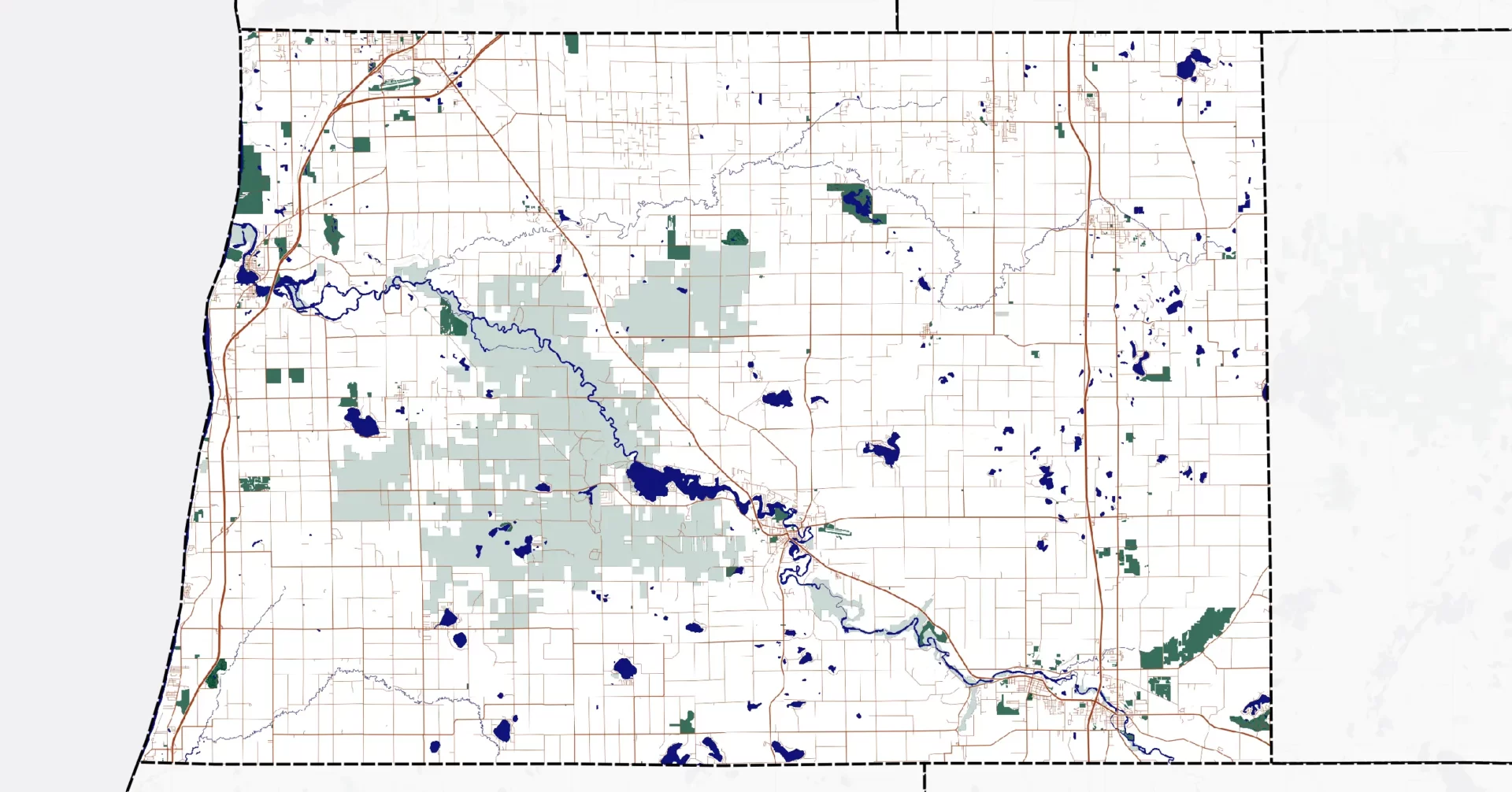
Median Household Income: $50,240
History and Economic Development: Allegan County, established in 1831, has a deep agricultural heritage. Its early economy centered on farming and milling, with the Kalamazoo River playing a crucial role in transportation. As the county matured, it diversified into manufacturing and tourism. The Allegan County Fair, one of the nation’s oldest, has been a cultural staple since 1852. Today, Allegan County’s economy thrives on agriculture, tourism, and manufacturing. It’s home to Perrigo, a major pharmaceutical company, and picturesque towns like Saugatuck and Douglas that draw tourists seeking scenic beauty and artistic inspiration.
13. Grand Traverse County
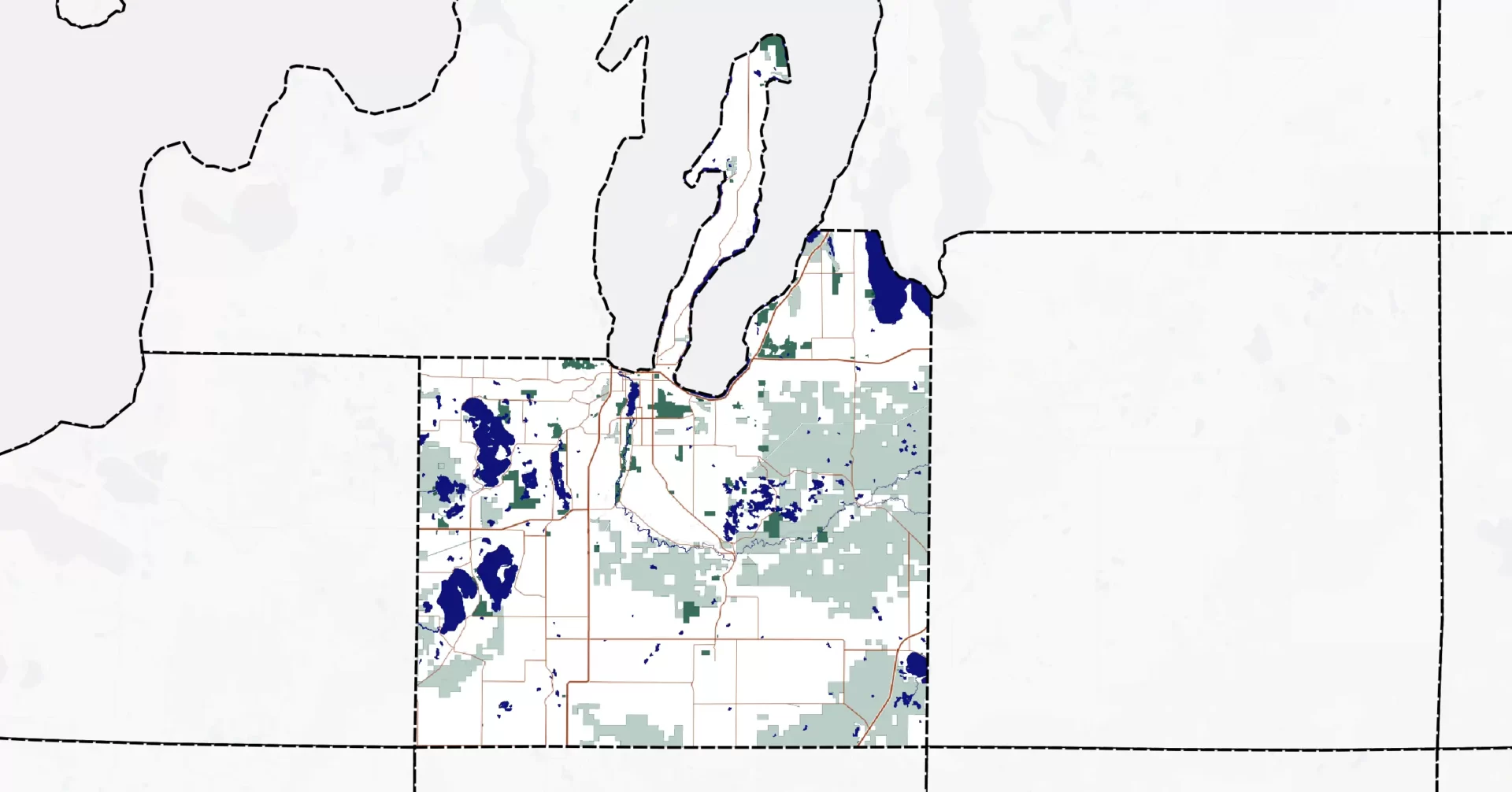
Median Household Income: $50,647
History and Economic Development: Grand Traverse County, established in 1851, found its economic roots in logging and agriculture. As the timber industry dwindled, the county’s focus shifted to cherries and tourism. Traverse City, the county seat, became renowned for its annual National Cherry Festival. In recent decades, Grand Traverse County has diversified its economy, welcoming tech companies and healthcare institutions. The region’s stunning natural beauty, including the nearby Sleeping Bear Dunes National Lakeshore, continues to attract residents and visitors alike, contributing to its economic resilience.
Please note that this format will be repeated for each of the remaining counties in the list, with their respective histories and economic developments highlighted.
12. Midland County
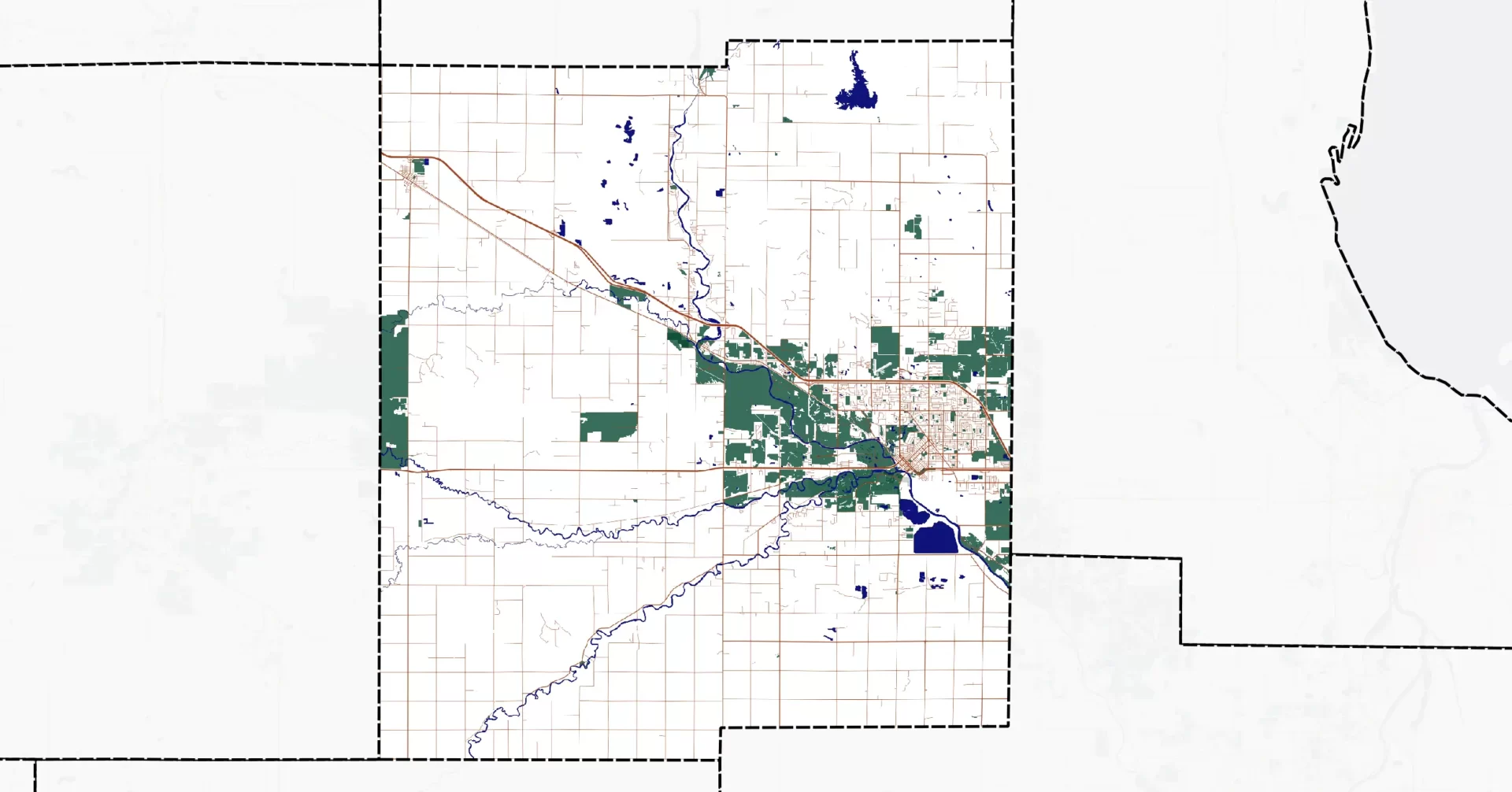
Median Household Income: $51,103
History and Economic Development: Midland County, established in 1831, was initially shaped by the lumber industry due to its proximity to the Tittabawassee River. The establishment of The Dow Chemical Company in 1897 marked a turning point, making Midland synonymous with chemical innovation. Over the years, Dow Chemical expanded its operations, solidifying the county’s position in the chemical industry. Today, Midland County continues to be a hub for scientific and technological advancements. With the presence of Dow, along with Dow Corning and other chemical companies, it remains a focal point of research and development in Michigan.
11. Barry County

Median Household Income: $51,869
History and Economic Development: Barry County, founded in 1829, started as an agricultural community, producing wheat, corn, and dairy products. The development of railroads in the late 19th century facilitated trade and industry. Today, Barry County maintains its agricultural heritage, but it has also diversified into manufacturing and tourism. The county’s picturesque landscapes, including Gun Lake, draw outdoor enthusiasts, while the presence of companies like Flexfab and Viking Corporation provides job opportunities and economic stability.
10. Macomb County
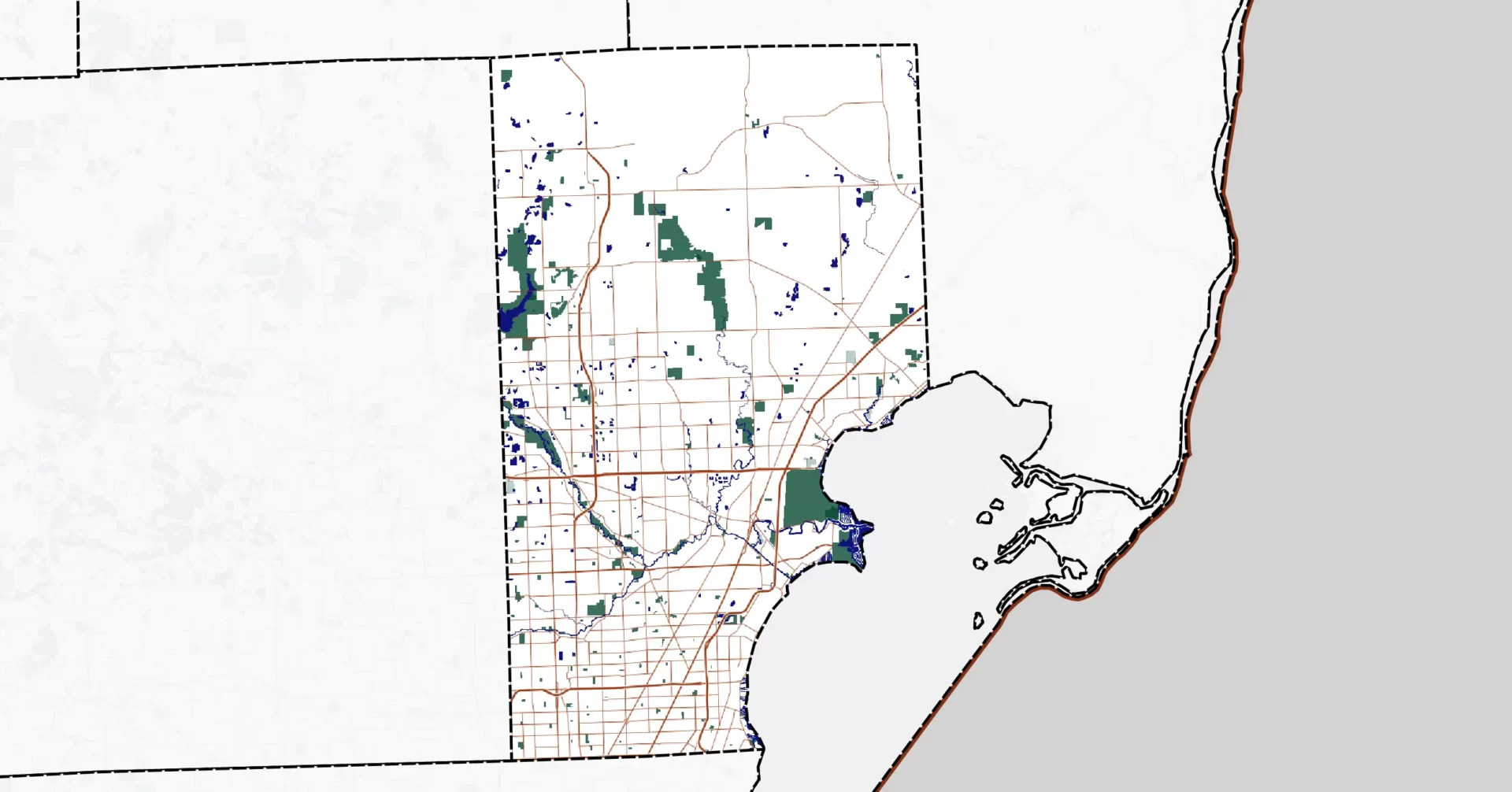
Median Household Income: $53,996
History and Economic Development: Macomb County, established in 1818, has a history closely tied to manufacturing. During World War II, the county became known as the “Arsenal of Democracy” due to its significant contributions to the war effort. The post-war era saw Macomb County embrace suburban development, and it became a major automotive manufacturing hub. Today, it remains at the forefront of automotive innovation with companies like General Motors and Ford. Macomb County’s diverse economy extends beyond manufacturing, encompassing healthcare, education, and defense, making it a vital part of the Detroit metropolitan area.
Please note that this format will be repeated for the remaining counties in the list, providing historical context and insight into their economic development.
9. Eaton County
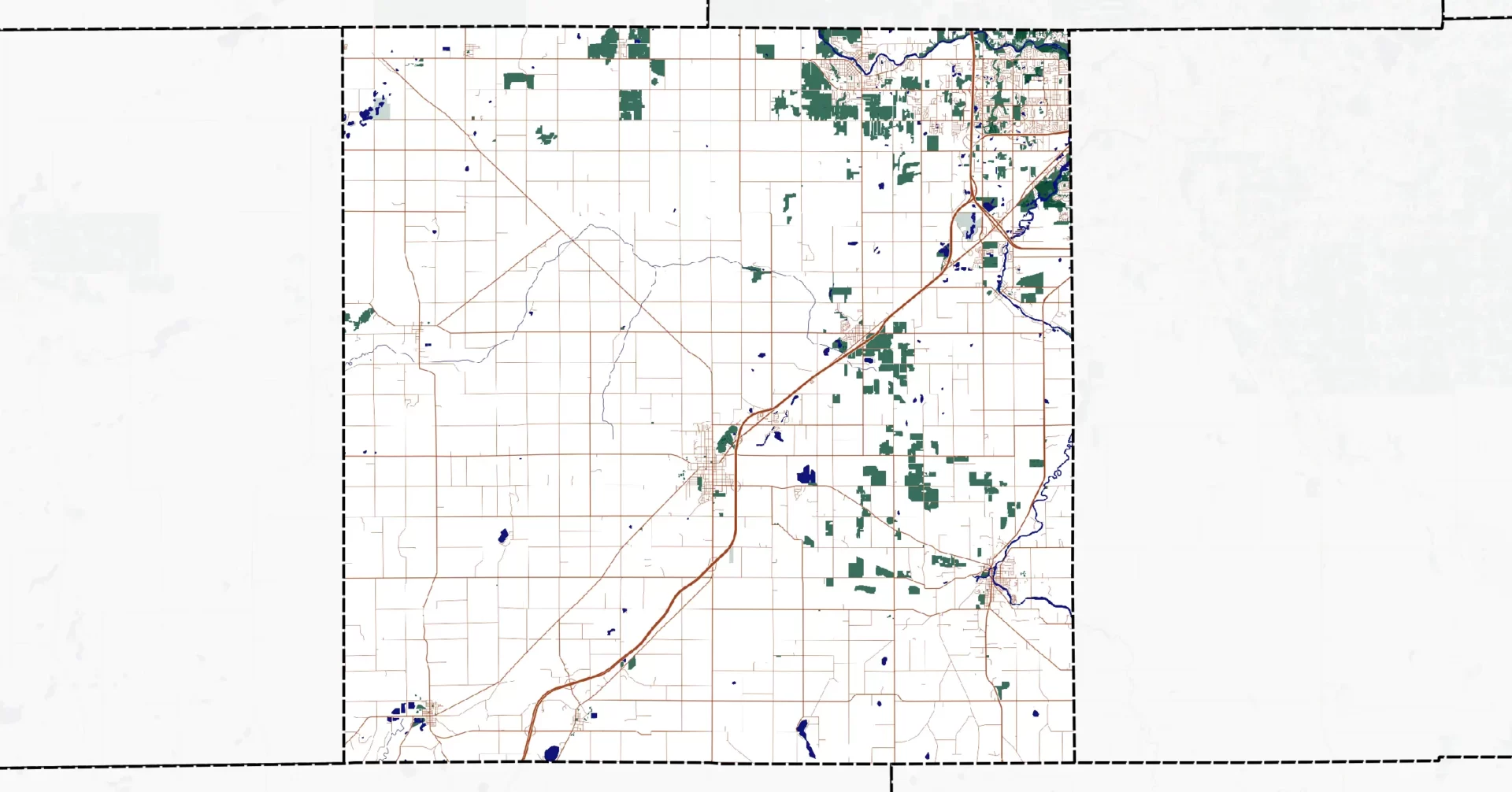
Median Household Income: $54,885
History and Economic Development: Eaton County, founded in 1837, began as an agricultural region, with early settlers primarily engaged in farming. The development of the Grand River brought commerce and industry to the county, and it became a hub for milling and manufacturing. Today, Eaton County maintains its agricultural heritage while diversifying into sectors such as healthcare, education, and automotive supply chain. The county’s strategic location between Lansing and Battle Creek has facilitated economic growth, and it continues to attract businesses seeking a central Midwest presence.
8. Lapeer County

Median Household Income: $55,005
History and Economic Development: Lapeer County, established in 1822, was initially a farming community known for its production of grains and livestock. The county’s early industrialization centered on sawmills and gristmills powered by the Flint River. Over time, Lapeer County evolved into a manufacturing and trade center. Today, it embraces its agricultural roots while participating in the automotive and healthcare industries. Lapeer County’s picturesque countryside and historical towns, like Lapeer and Metamora, offer a blend of rural charm and economic opportunity.
7. Ottawa County

Median Household Income: $55,095
History and Economic Development: Ottawa County, founded in 1831, has a rich history shaped by shipping, lumber, and agriculture. The county’s strategic location along Lake Michigan made it a vital center for trade and commerce. As industry evolved, Ottawa County embraced manufacturing and technology, attracting companies like Herman Miller and Gentex. Today, the county’s diverse economy includes healthcare, education, and agriculture. Ottawa County’s pristine lakeshore, including Holland State Park, continues to draw residents and visitors, contributing to its economic vitality.
6. Monroe County
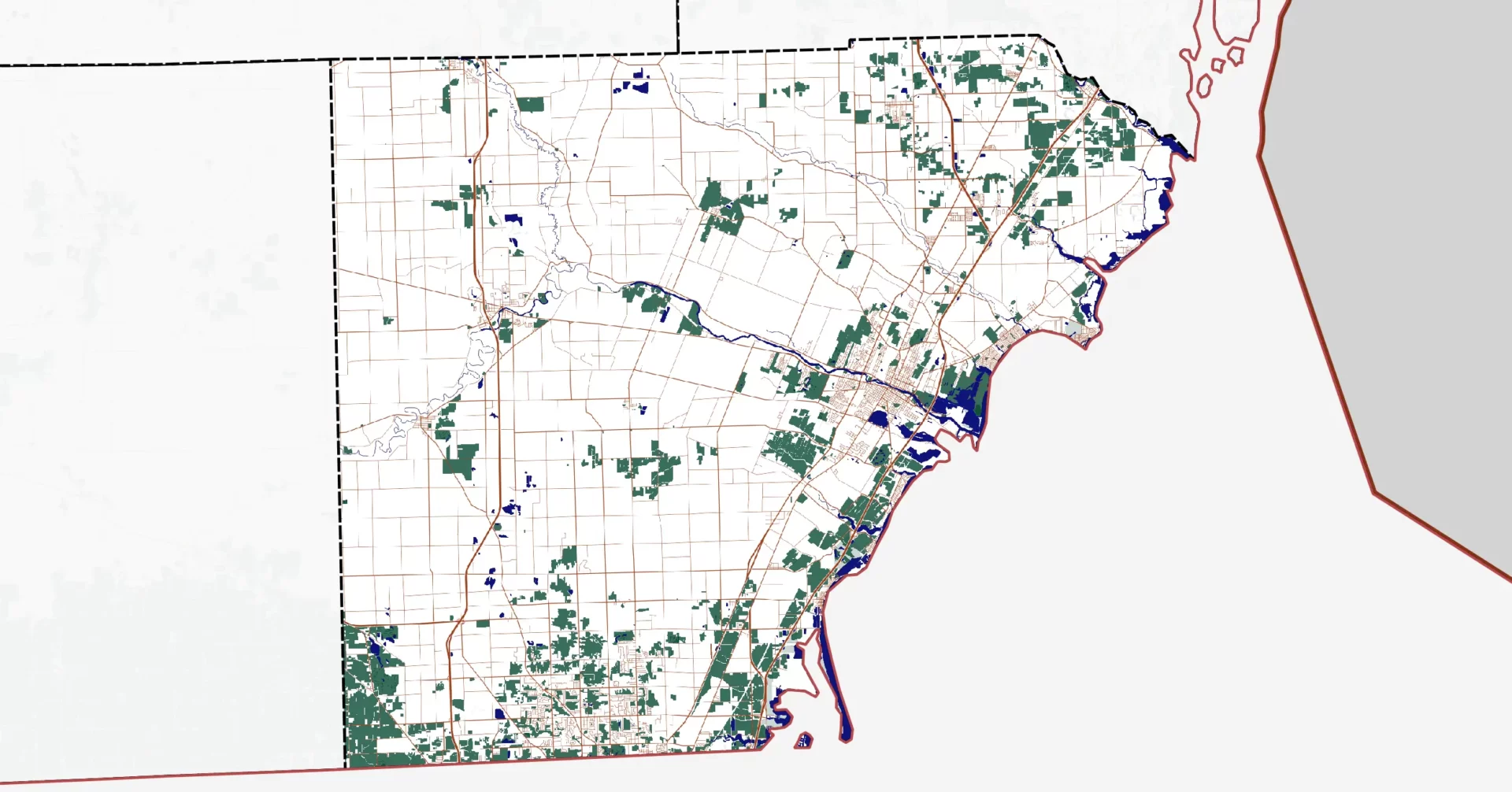
Median Household Income: $55,366
History and Economic Development: Monroe County, established in 1817, played a significant role in the early fur trade and agriculture. The construction of the Erie Canal in the 19th century spurred industrial development, including milling and manufacturing. Monroe County’s strategic location along the Detroit River contributed to its growth as a transportation and trade hub. Today, the county’s economy is multifaceted, encompassing manufacturing, healthcare, and tourism. The historic city of Monroe, along with attractions like the River Raisin National Battlefield Park, showcases the county’s rich heritage and economic resilience.
5. Leelanau County

Median Household Income: $56,527
History and Economic Development: Leelanau County, established in 1840, began as a timber and logging region. As the timber industry declined, the county transitioned to agriculture, particularly cherries and vineyards. The tourism industry blossomed with the county’s stunning natural beauty, including Sleeping Bear Dunes and Lake Michigan shoreline. Today, Leelanau County thrives as a destination for outdoor enthusiasts and wine connoisseurs. Its economic development is closely tied to agriculture, tourism, and a commitment to preserving its pristine environment.
4. Clinton County
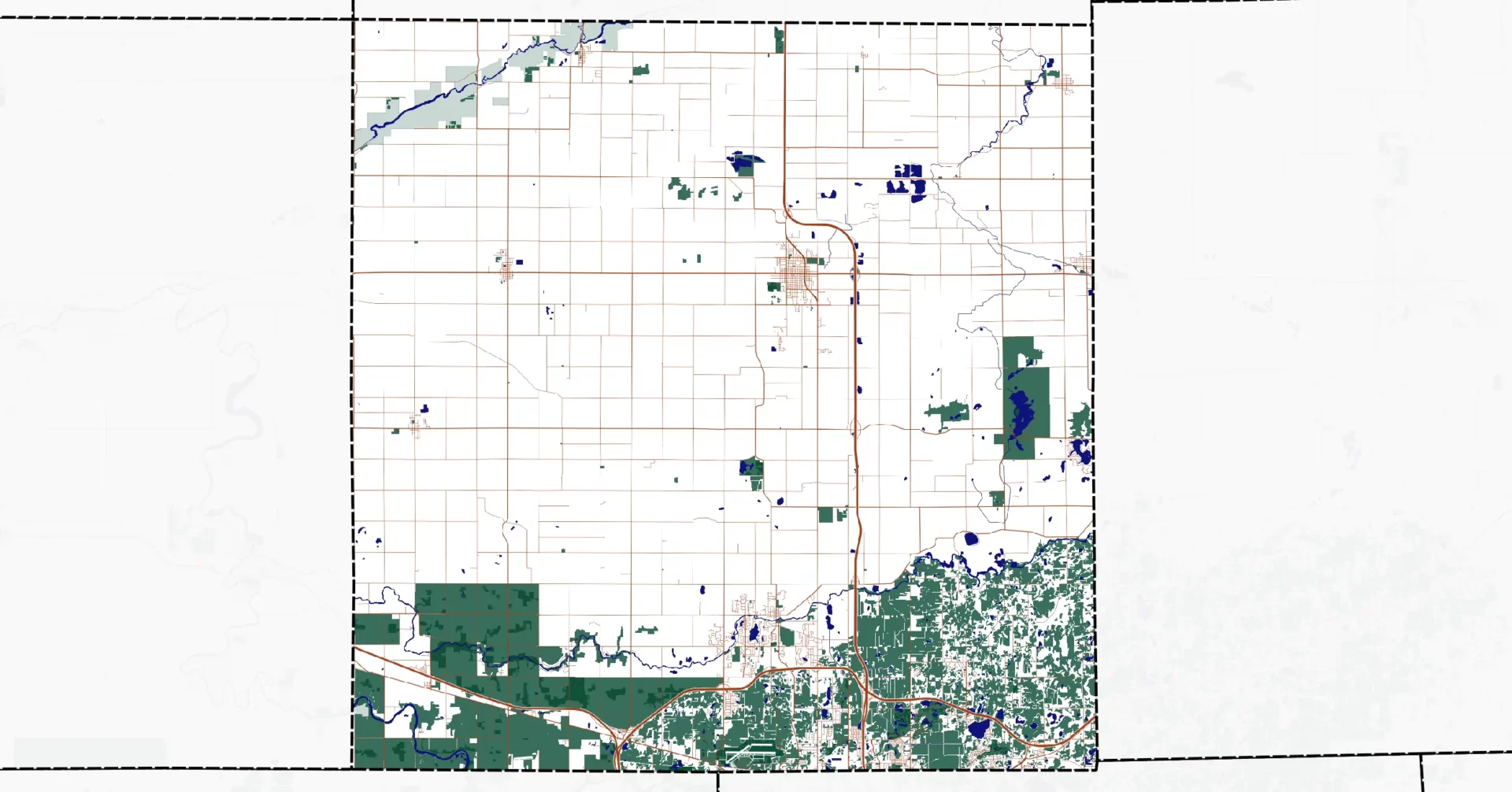
Median Household Income: $58,016
History and Economic Development: Clinton County, founded in 1831, was initially an agricultural community, known for its production of grains, livestock, and dairy products. Over time, it diversified into manufacturing and trade, aided by the growth of the railroad. Today, Clinton County’s economy includes manufacturing, agriculture, and healthcare. The county’s commitment to preserving its rural character while embracing modern industry has contributed to its economic stability and appeal.
3. Washtenaw County

Median Household Income: $59,065
History and Economic Development: Washtenaw County, established in 1826, is home to the University of Michigan, which played a pivotal role in its history. The county’s early economy was rooted in agriculture, but the establishment of the university brought educational and cultural growth. Over time, Washtenaw County diversified into healthcare, technology, and research. Today, it stands as a center of innovation, with tech startups, research institutions, and a thriving healthcare sector. The county’s economic prosperity is a testament to its commitment to education and progress.
2. Livingston County
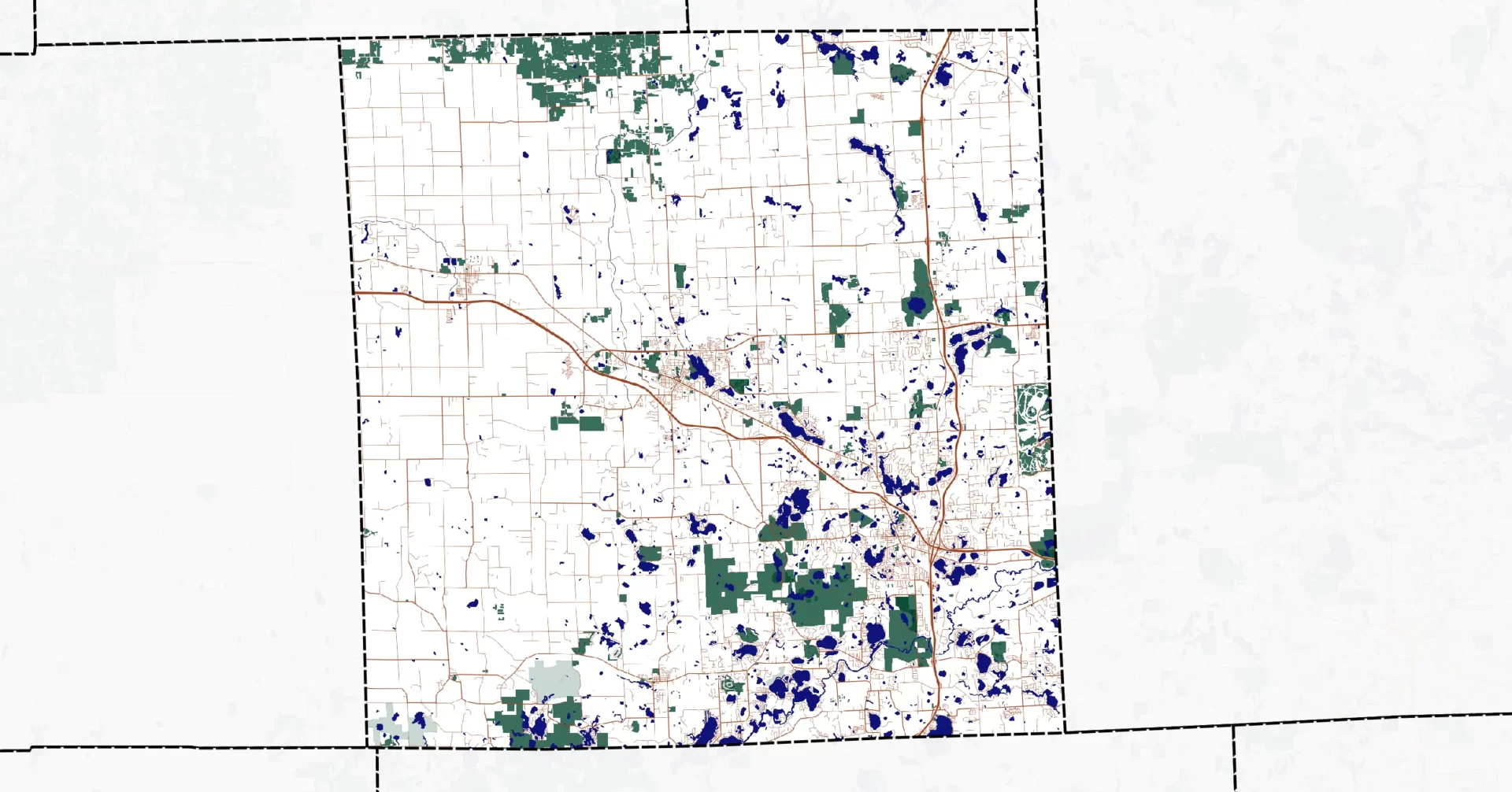
Median Household Income: $72,129
History and Economic Development: Livingston County, founded in 1833, began as an agricultural region, with early settlers engaged in farming and milling. The county’s strategic location between Detroit and Lansing facilitated trade and industry. Over time, Livingston County evolved into a hub for manufacturing, healthcare, and education. Today, it is known for its strong job market, excellent schools, and quality of life. The county’s economic development reflects its commitment to balancing urban conveniences with natural beauty.
1. Oakland County

Median Household Income: $85,991
History and Economic Development: Oakland County, established in 1819, was initially an agricultural area with a focus on grains and orchards. The county’s transformation into a major economic powerhouse began with suburban development in the post-war era. Oakland County embraced technological innovation and diversified into finance, automotive, healthcare, and information technology. Today, it boasts a robust job market, world-class amenities, and a diverse cultural scene. The county’s economic success is a testament to its adaptability and commitment to growth.
In conclusion, the 15 richest counties in Michigan each have a unique history that has shaped their economic development from their foundation to the present day. These histories provide insight into the factors that have contributed to their current prosperity, making them attractive places to live and work.
Conclusion: A Wealth of Opportunities
| RICHEST COUNTIES IN MICHIGAN | |
| COUNTY | MEDIAN HOUSEHOLD INCOME (2021) |
| Oakland | $85,991 |
| Livingston | $72,129 |
| Washtenaw | $59,065 |
| Clinton | $58,016 |
| Leelanau | $56,527 |
| Monroe | $55,366 |
| Ottawa | $55,095 |
| Lapeer | $55,005 |
| Eaton | $54,885 |
| Macomb | $53,996 |
| Barry | $51,869 |
| Midland | $51,103 |
| Grand Traverse | $50,647 |
| Allegan | $50,240 |
| Kent | $49,532 |
Source of this table: United States Census Bureau (USCB) (Data from Michigan)
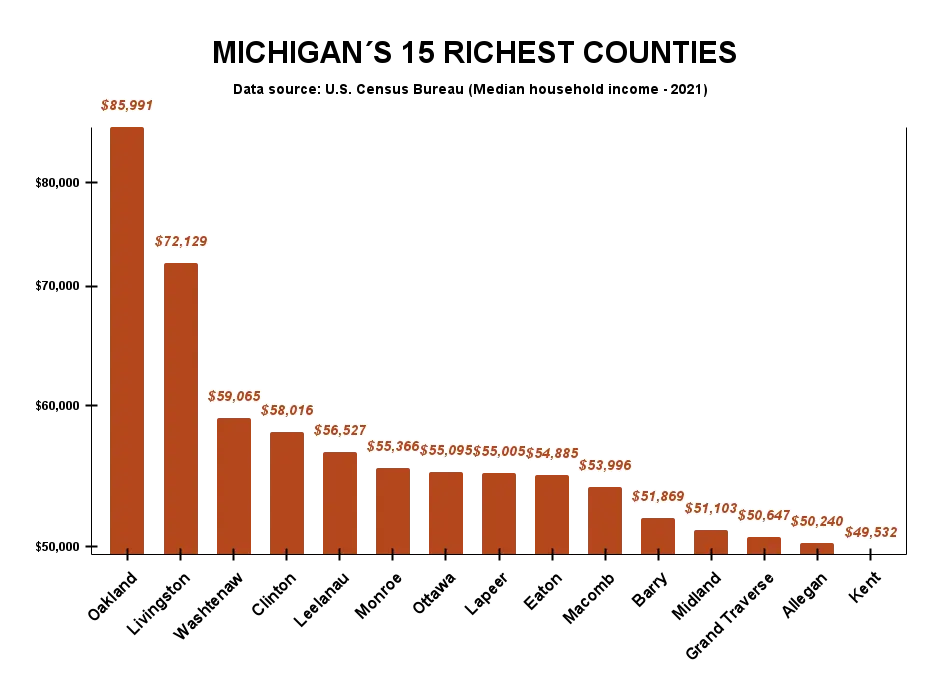
Our journey through Michigan’s richest counties reveals not just an economic success story but a testament to resilience and innovation. From Midland County’s chemical industry dominance to Livingston County’s balance between urban amenities and natural beauty, these counties offer a rich tapestry of possibilities for residents and businesses alike. The lure of Michigan extends beyond its iconic automobile legacy to embrace education, healthcare, technology, and agriculture. These counties epitomize the American spirit, where hard work, determination, and adaptability lead to prosperity.
In the face of economic challenges and changing landscapes, these counties have demonstrated their ability to evolve, diversify, and thrive. As we conclude our exploration, it’s clear that the wealth of Michigan is not just measured in dollars but in the quality of life, the pursuit of dreams, and the promise of a brighter future. Each county, with its unique history and contemporary success, serves as an invitation to all who seek a place where wealth truly meets opportunity.






